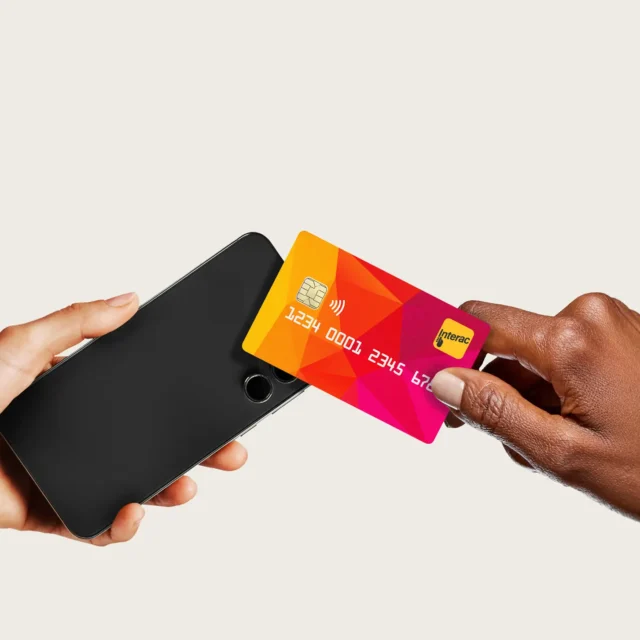“The customer is always right” is an old adage, but it’s still actively shaping the future of retail.
Today, customers expect a high level of service at all points in a transaction — including being able to pay their way. Meeting and exceeding these expectations is pivotal for businesses looking to compete in the changing market.
Here, Nader Henin, AVP, Commerce at Interac and Melina Stathopoulos, Senior Product Lead for Retail Payments at Shopify share their thoughts on the evolution of consumer behaviour and ways businesses can cater to heightened expectations for an omnichannel experience.
Interac In The Know: Looking back on the last couple of years, what trends are you watching in retail payment processing?
Nader Henin, Interac: The global pandemic has really changed consumer behaviour, where new ways of shopping and fast adoption of digital solutions, such as flexible payment options, a focus on contactless payments and digital wallets, were born out of necessity. Many of these behaviours will shape the retail industry now and, in the future.
Melina Stathopoulos, Shopify: The thing we’re looking at is the fact that now, more than ever before, consumers are in control. They vote with their wallets.
NH: And merchants now need to provide consumers with choices. Shopping for goods and services is not just a transaction anymore. Shopping has become a journey of building relationships with merchants and brands, where the merchants should be providing value to consumers before, during, and after the purchase. It’s part of an integrated approach we call “omnichannel.”
ITK: How would you explain the importance of an omnichannel experience, for those who aren’t familiar?
NH: Omnichannel is about providing a unified customer experience across multiple channels, such as brick-and-mortar, online or social, where each piece seamlessly connects with the others. That could mean enabling a consumer to discover, engage, research, buy and get post-purchase support using whatever channels they want, at any time they want.
MS: It’s really about meeting your customers where they are and empowering them to shop the way they want to shop, and pay the way that they want to pay. And for there to be consistency between the experience they have online and what they experience in store.
Merchants who have adopted an omnichannel approach, where they’re integrating online and in-person sales, are getting richer, more consolidated sales insights. This means they’re also more empowered to pivot and try out new things without interrupting their buyers’ experiences.
NH: I would say we’re even evolving from an omnichannel approach to one where the customer is the channel right now. The customer is the one dictating everything, it’s not the merchants.
ITK: Nader, earlier you mentioned consumers want choices. Does the desire for choice translate into the payment experience?
NH: Yes. If merchants count on one payment method, that may result in them losing a transaction. And the cost of them losing transactions is much higher, by far, than adopting multiple payment choices. In fact, we recently conducted a survey that found seven in 10 Millennials and nearly two thirds of Gen Z adults believe Canadians should have the option to use debit no matter where they’re checking out, online, in app or in store. That’s why merchants support the debit option as part of their payment offering to their customers.
ITK: Both Interac and Shopify have data that shows younger consumers adopt new behaviours and technologies quicker than other demographics. What role do young consumers play in driving changes in the payments landscape?
MS: Consumers under 30 or 35 are really changing the business landscape when it comes to payments and the way people shop. Young people are early adopters of technology and they’ve really been leading the charge when it comes to adopting online shopping and the proliferation of e-commerce itself.
NH: And most of their shopping and payments are done using their own mobile devices. The convenience factor is huge among young consumers. If they pop into a coffee shop, for example, the expectation is that the coffee can be paid for with a mobile payment or paid for in-app before they arrive. They expect to be able to pay for the purchase without having to look through a wallet for a physical card.
ITK: Shopify’s Future of Commerce report shows that over two-thirds of Canadians want to shop at local, independent retailers. Is that reflected in how they actually shop? How can retailers capitalize on Canadians’ desire to shop small?
MS: We’ve seen that proximity alone for retailers can be one of their most powerful selling features. Merchants who are able to adopt strategies that make shopping local and independent an easy choice are going to have the advantage in the market. The pandemic really highlighted the opportunity that merchants have to meet their buyers where they are and it underscored the importance of taking an omnichannel approach for servicing local needs.
NH: Yes, that’s the key for success, in my opinion. If they don’t do so, they risk becoming irrelevant to customers who are not patient anymore. Those people are going to turn to the merchants who provide the most convenient experiences. This means retailers need to be ready to seamlessly accept all forms of payments online, in-app, curbside or in store.
MS: We saw that for Shopify merchants who enabled tools such as local pick up and local delivery, their sales conversion increased 13 and 19 per cent, respectively. What’s more exciting is that of the buyers who chose local pick up or local delivery as fulfilment options, they spent 23 per cent more and had a 25 per cent higher cart size. It’s clear that the ease of shopping local and independent actually motivates consumers to buy more.
ITK: Interac and Shopify have been working on something together that will help small business merchants offer an omnichannel sales experience. Can you tell us about that?
MS: What we’ve been working on is a way to use Shopify’s Tap & Chip Reader to accept Interac chip and PIN transactions securely with an off-the-shelf consumer device. So, whether that’s a phone or a tablet, merchants can securely accept a buyer’s PIN when processing non-tap card payments with the Tap & Chip Reader.
NH: In other words, this solution allows merchants to take payments simply using an application, a small piece of Bluetooth-enabled hardware, and the merchant’s own mobile device. Providing small- and medium-sized merchants, and micro merchants as well, with a convenient and affordable way to take card-based payments.
Interac is, I would say, the payment brand of choice for small merchants, because of our low transaction fees. And because Interac Debit is a key way Canadians already pay, the chip and PIN support on Shopify’s Tap & Chip Reader will allow a large number of small merchants in Canada to offer consumers the ability to pay using their preferred method.
MS: You can see in the wake of the pandemic how convenient it would be for merchants who are doing things like curbside or in-store pickup to be able to take a wireless reader on the go, and to be able to accept contactless or chip-and-PIN payments, whether you’re outside of the store, away from the countertop, or wherever your buyers are.
NH: Yes, imagine how easy, mobile and affordable that would be. You can take your device anywhere you go. So, it is adding huge flexibility for the merchants and it’s an affordable option for them as well.
ITK: And it’s easy to imagine how that’s going to fuel new ideas and new forms of small business transformation.
NH: Absolutely.




